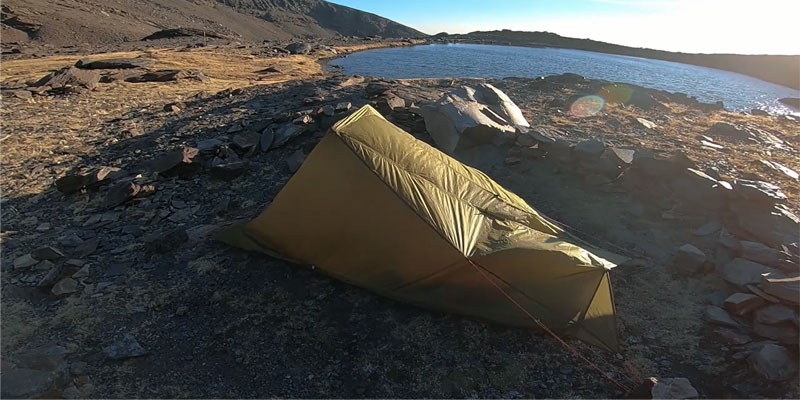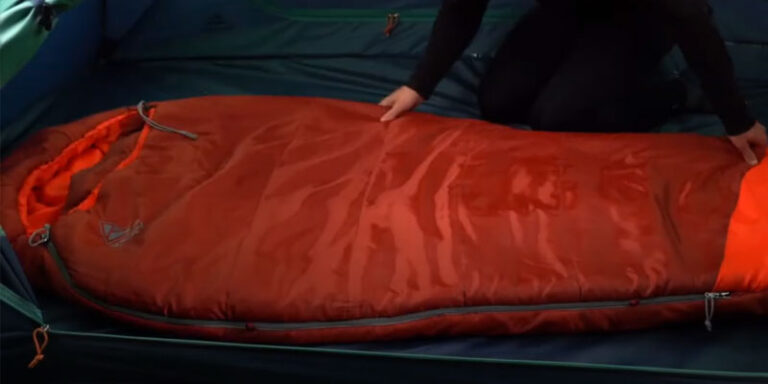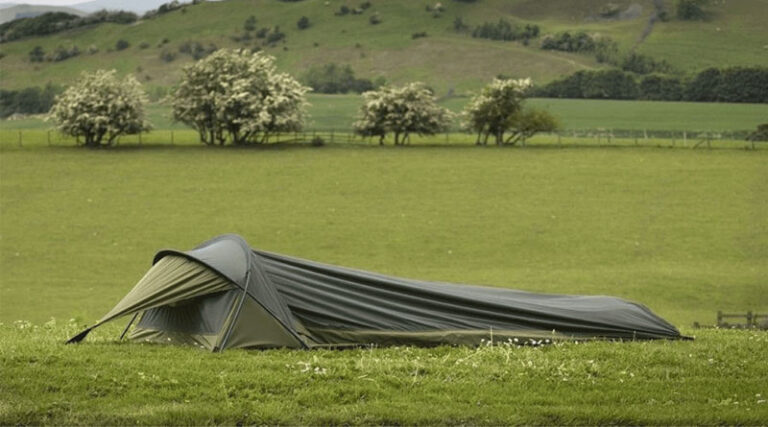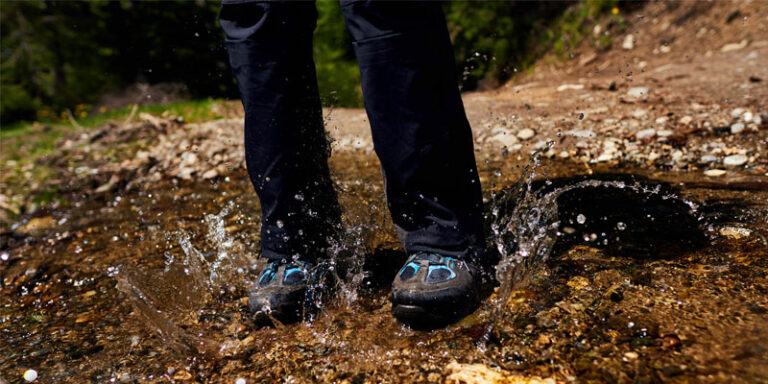When it comes to outdoor adventure, having reliable gear is essential for a safe and comfortable trip. One piece of equipment that can make or break a camping experience is the tent. With so many options on the market, it can be challenging to determine which one is right for you. In this article, I will be reviewing the REI Co-op Flash Air 1 tent. This lightweight and compact tent is designed for solo backpacking trips. It promises to offer excellent ventilation and an easy setup. I’ll take an in-depth look at its features, durability, and overall performance to help you decide if it’s the right choice for your next outdoor excursion.
Specs and Details
I highly recommend the REI Co-op Flash Air 1 for solo backpacking trips. This ultralight tent is priced at $249, but you can get it for just $199 on sale. It weighs only 750 grams or 26.5 ounces. This makes it incredibly lightweight and perfect for backpackers looking to reduce their pack weight. Its trekking pole design allows you to use a trekking pole instead of the included main pole. Using trekking poles can reduce the total weight to about 700 grams or 24.7 ounces. Plus, you can save even more weight by leaving the storage bag and smaller repair kit at home. That way, you are bringing the weight down to 650 grams or about 23 ounces.
The tent comes with five durable and lightweight DAC aluminum stakes and four guylines. They weigh in at 59 grams or two ounces for all five stakes. While it’s made from thin polyurethane or silicone-coated nylon, I recommend using a footprint underneath the tent to protect it from sharp rocks and branches. You can either purchase the dedicated footprint from REI for about $45 or use a regular tarp to save both money and weight.
How to set it up?
To set up the tent, first, take out all the parts from the bag. Remove the poles and store them at the side of your backpack to make the rest of the tent compress down to a small size.
Next, select a good campsite that is flat and free of rocks. Then, take out all four corners of the tent and use four stakes to secure them. Insert the pole into the foot end of the tent and unzip the main vestibule zipper. Insert the second pole over the tent and then insert the main pole, making sure to clip the clip around it.
Close the main zipper and stake out the vestibule with your fifth and last stake. Adjust the strings on each corner of the tent and make sure it is sitting straight. Even everything out by looping the orange cords around each stake.
Adjust the length of the orange cords until the tent looks straight from all sides. If it’s windy, use the guidelines in all four corners by adjusting the tension until it looks good. To set up the tent with a trekking pole, replace the main pole with a trekking pole and adjust its height. Once you get used to it, it’s pretty easy to set up.
Liveability
This tent is on the smaller side, with dimensions of 88 inches or 220 centimeters in length, 35 inches or 88 centimeters in width on one end, and 27 inches or 68 centimeters in width at the foot end. If you’re wondering if your sleeping pad will fit in the tent, it should be noted that the tent is cozy and it’s best to measure your sleeping pad to be sure.
Once inside, you’ll find that the tent is a bit tight. But it’s enough for all of your gear. Typically, it’s best to keep your sleeping pad on one side and your gear on the other. However, if you do need to keep some gear outside, beware of the foxes that might try to steal your food. Also, if it’s not too windy outside, it’s best not to touch the walls of the tent as it can cause condensation that might get your sleeping bag wet.
At 195 centimeters or 6 feet and 1 inch, the height of the tent is just right for me. When laying down, my feet don’t touch the walls, and my head doesn’t touch the wall either. However, the maximum height that would be suitable for this tent is about 190 to maybe 195 centimeters, so taller people may find it a bit small.
In terms of livability, the tent has a small triangle pocket and a thing on top for hanging a lantern, but I found it to be more useful to bring a small plastic hook to hang my headlamp. Overall, the REI Flash Air 1 tent offers just the bare bones of what you need, which is to be expected with any ultralight tent. But for me personally, it’s perfect for use as a shelter.
Rain Resistance
When it comes to rain resistance, the REI Flash Air 1 has proven to be a reliable shelter. I have used this tent in rainy conditions before, although nothing too severe like a rainstorm. During one rainy night, there was mediocre rainfall for most of the night, and there were no leaks.
While there is no footage of this rainy night, reviews on REI’s website also show that leaks are not a recurring issue. However, one reviewer did report a leaking issue near the zipper on top, which may have been a production defect. Nonetheless, the tent has proven to be waterproof for the majority of users, including myself.
Wind Resistance
When it comes to wind resistance, the REI Flash Air 1 holds up nicely in windy conditions. I have tested this tent at wind speeds of up to 45 meters per second in an open area. The tent remained stable throughout the night. However, to prepare for harsh winds, I’d recommend placing a large rock in each corner of the tent, on top of all the strings and guylines, and another smaller rock behind the stakes to prevent them from coming out.
In the morning, after a windy night, I observed that one of the stakes had been blown out as soon as I removed the rocks. So, using rocks to anchor the tent is recommended when it’s windy. It’s important to note that the sidewalls of the tent tend to flap around and hit your face and feet quite a lot in windy conditions. I’d also recommend tucking your sleeping bag tightly around you if you want to get a good night’s sleep. Finally, if there’s any condensation on the walls, it will keep splashing on your face for the entire night, which can be pretty annoying.
Condensation
When it comes to condensation, the REI Flash Air 1 tent isn’t the best performer. I have tested it in heavy rainstorms, and as seen in a video by Chris Goes Outdoors, it can result in a worst-case scenario. However, from personal experience, the condensation has not been as severe. There were only a few droplets forming on the walls, which didn’t necessarily leak down to the bottom of the tent, but it did make my sleeping bag and pad a bit damp.
The reason for this is that the tent doesn’t provide enough ventilation. The only ventilation that you get is from a small gap underneath the vestibule with tiny mesh panels on two corners and an opening at the top of the tent. This lack of ventilation can cause some serious issues with condensation. However, if you’re hiking in higher altitudes or drier areas, you shouldn’t have any serious problems with condensation.
It’s worth noting that many single-wall ultralight tents can be bad at dealing with condensation. If you’re into ultralight hiking, then it’s just something you’ll have to deal with. But if you live somewhere humid or with a lot of rain, you might want to think twice about buying this tent.
Verdict
Based on my experience, the Flash Air 1 tent is not suitable for everyone. However, it can be a good choice for some people. The biggest issue with this tent is the condensation. But if you live in a dry or colder place, or if you plan to use it in higher altitudes, condensation won’t be a big issue for you. However, if you’re looking for a tent with better condensation performance, you might want to consider getting a more expensive ultralight tent with a double wall system. Some examples of double-wall tents include the ZPacks Altaplex or something from Hyperlite Mountain Gear.
Keep in mind that these options will be more expensive. Sometimes two or three times more, and still won’t be perfect in terms of condensation. On the other hand, if you want something that’s lightweight and more affordable than those options, the Flash Air 1 is a good choice. It’s fully waterproof and does well in windy conditions. However, it can be difficult to set up at first, but once you get used to it, it’s much easier.
Overall, I consider the Flash Air 1 to be the best ultralight option for its weight and price. While condensation can be an issue, I don’t find it to be a major problem. But, it’s important to note that it’s not for everyone, and if you live in a humid area or experience heavy rain, you might want to look for a tent with better condensation performance.



